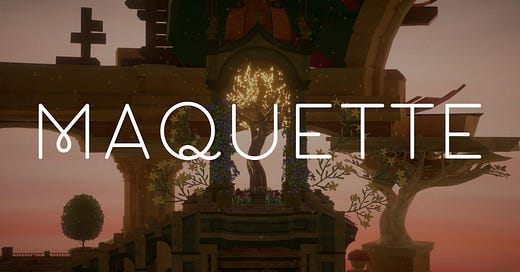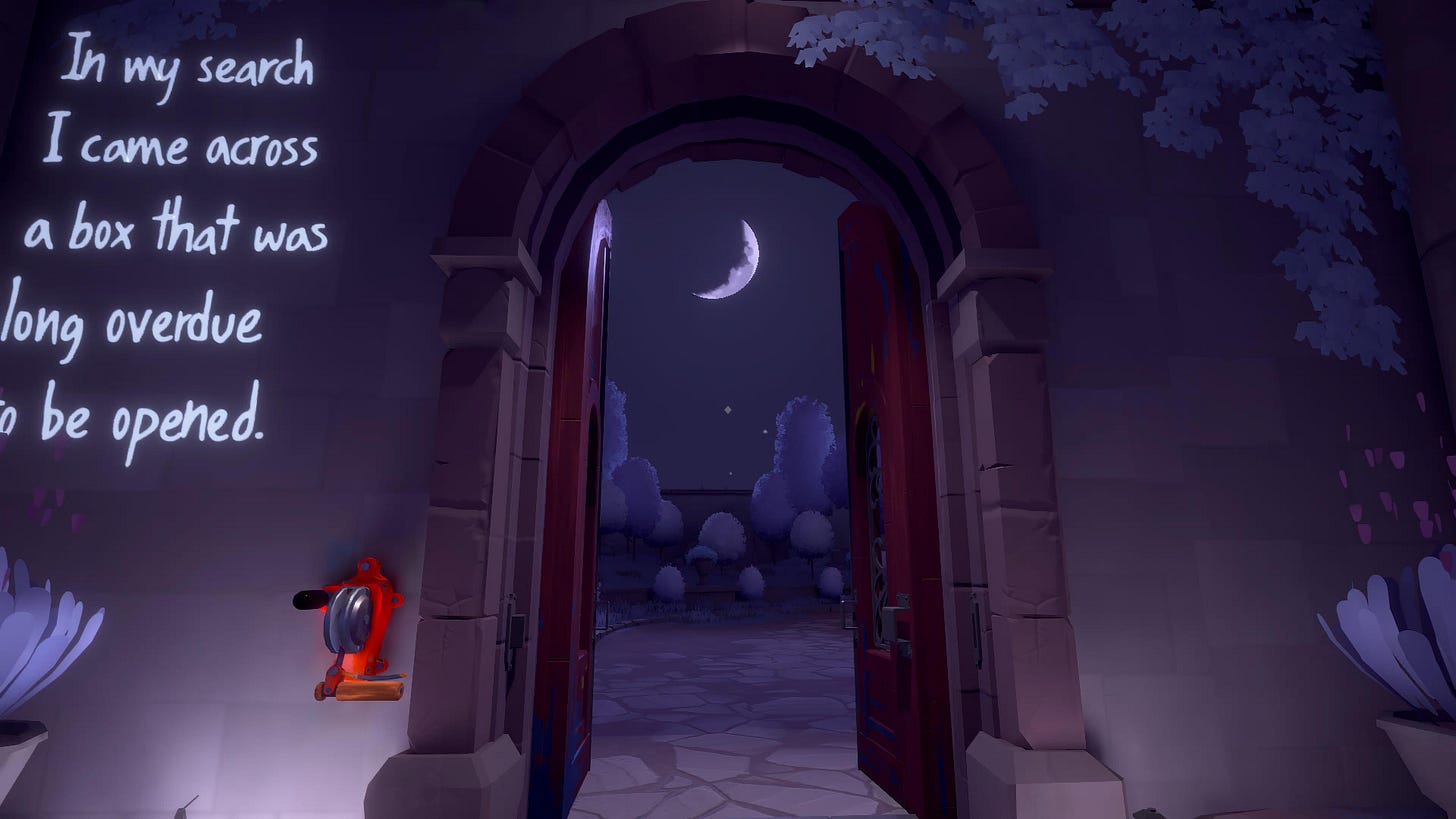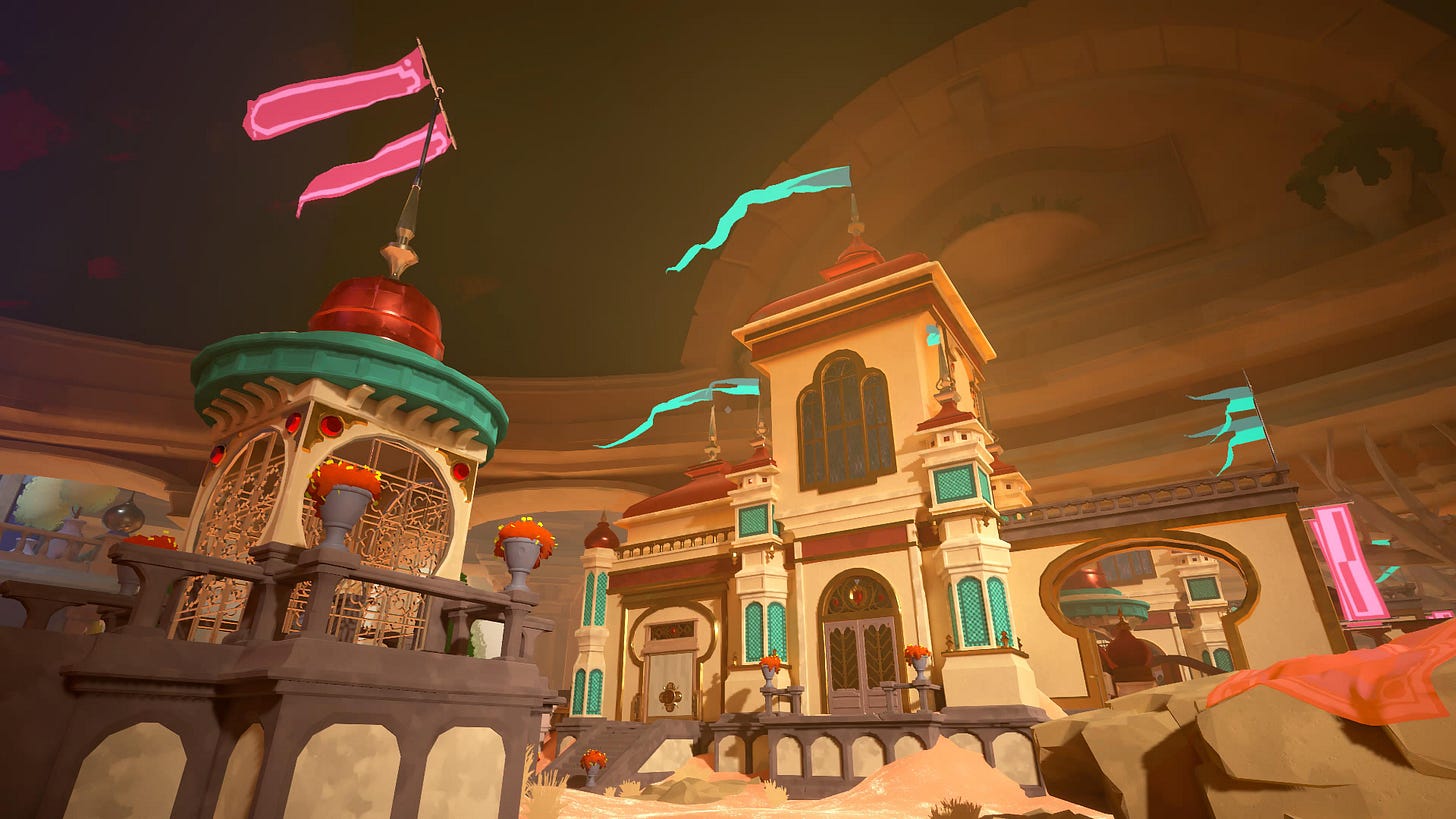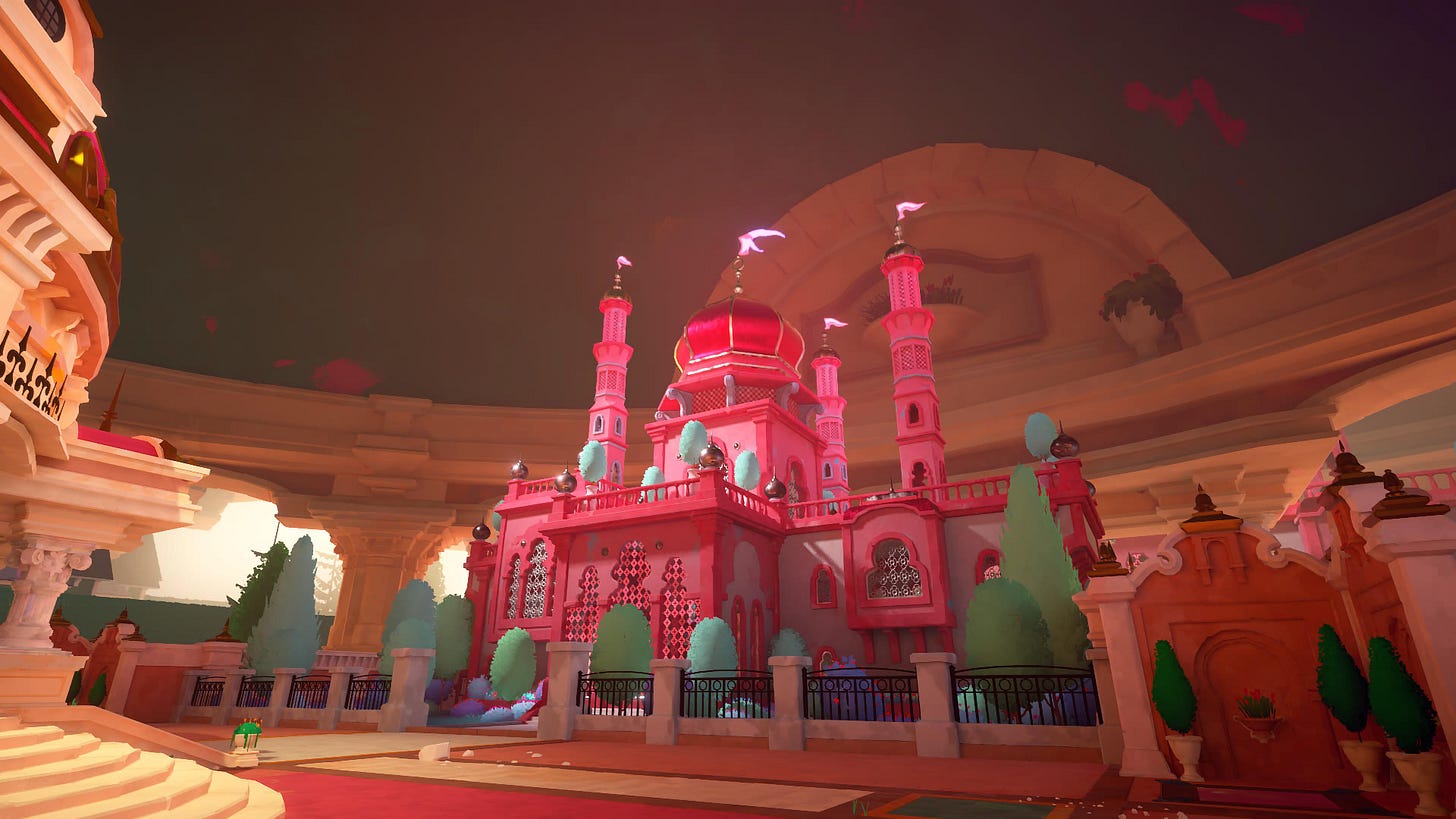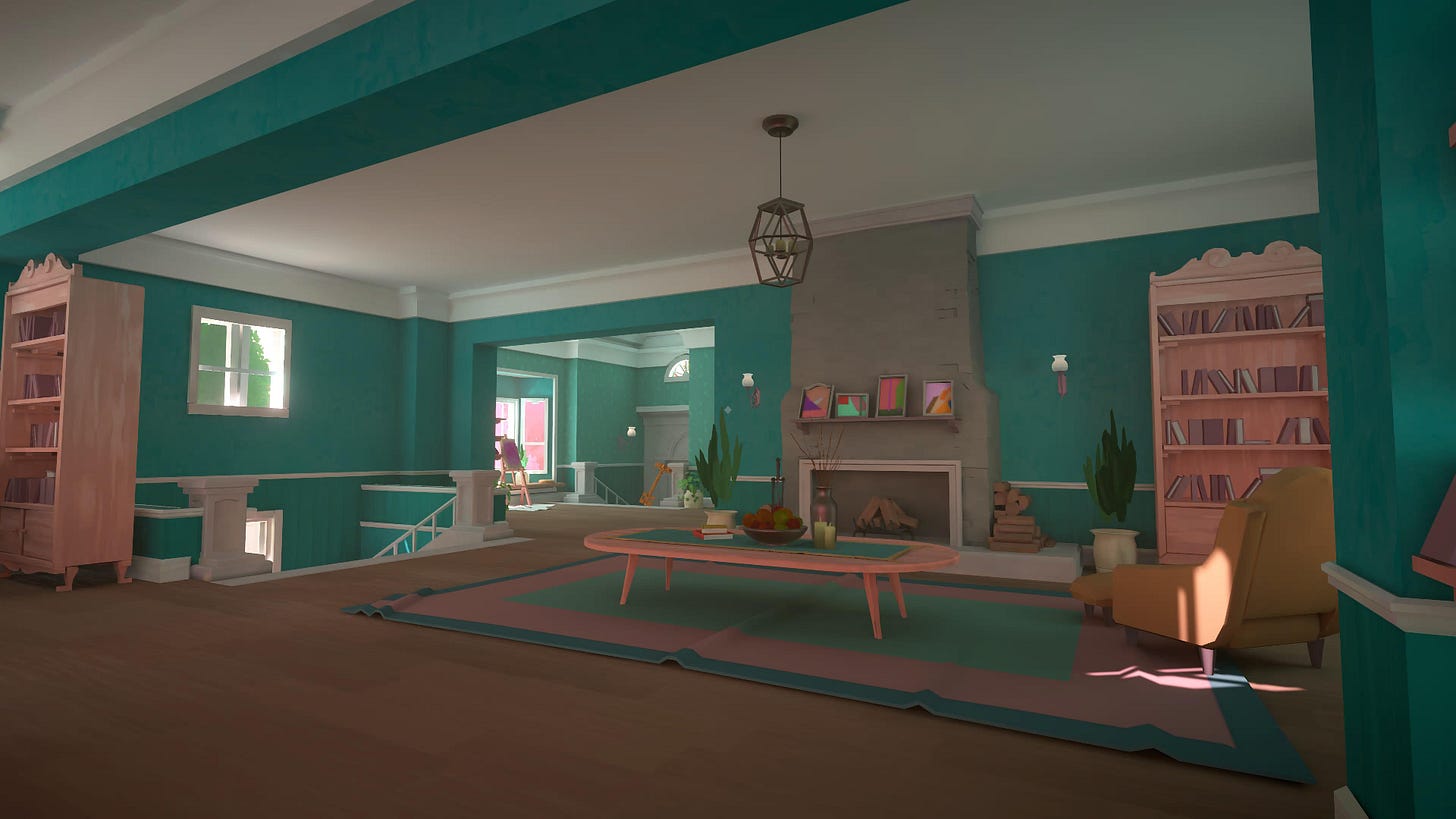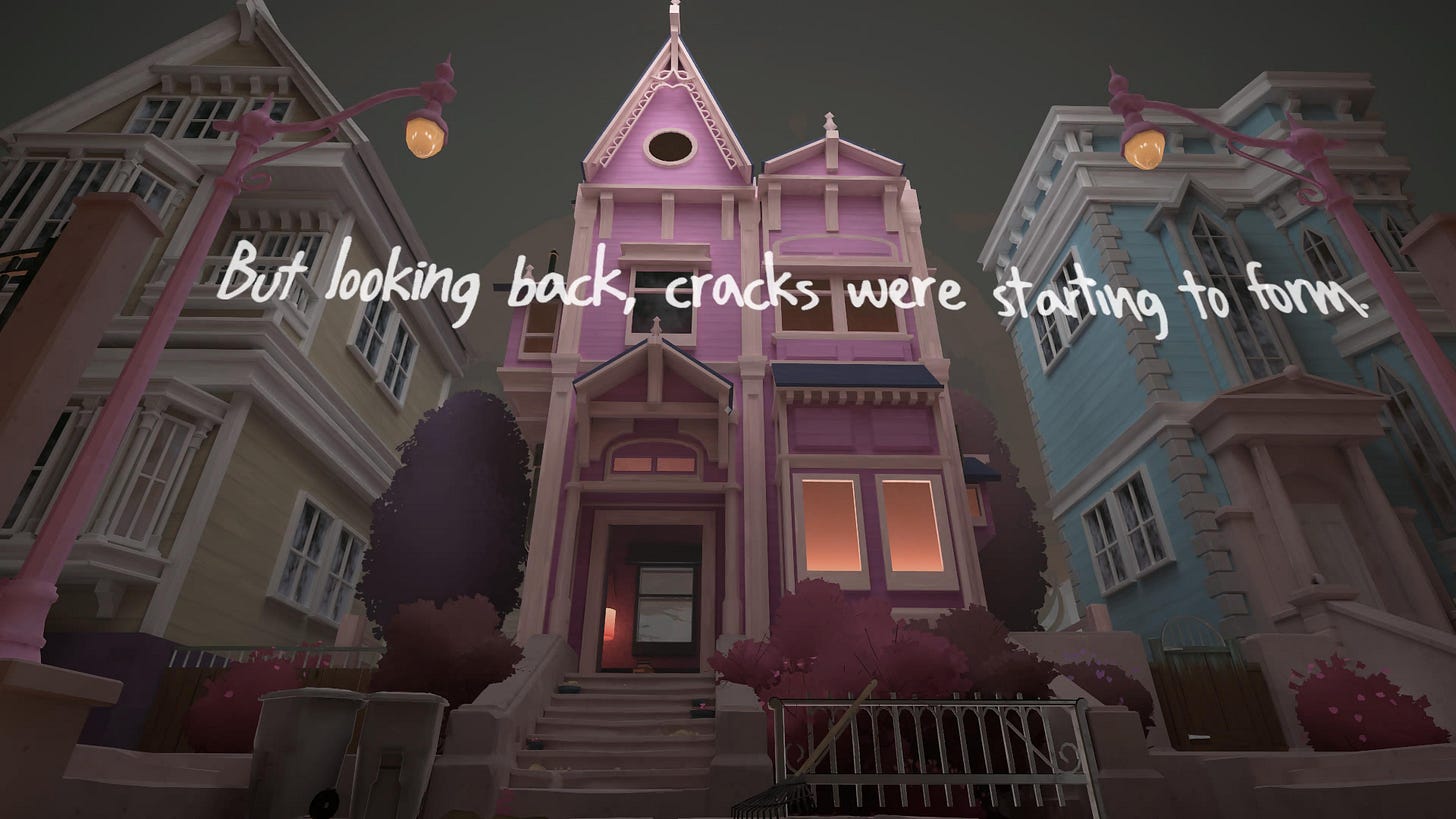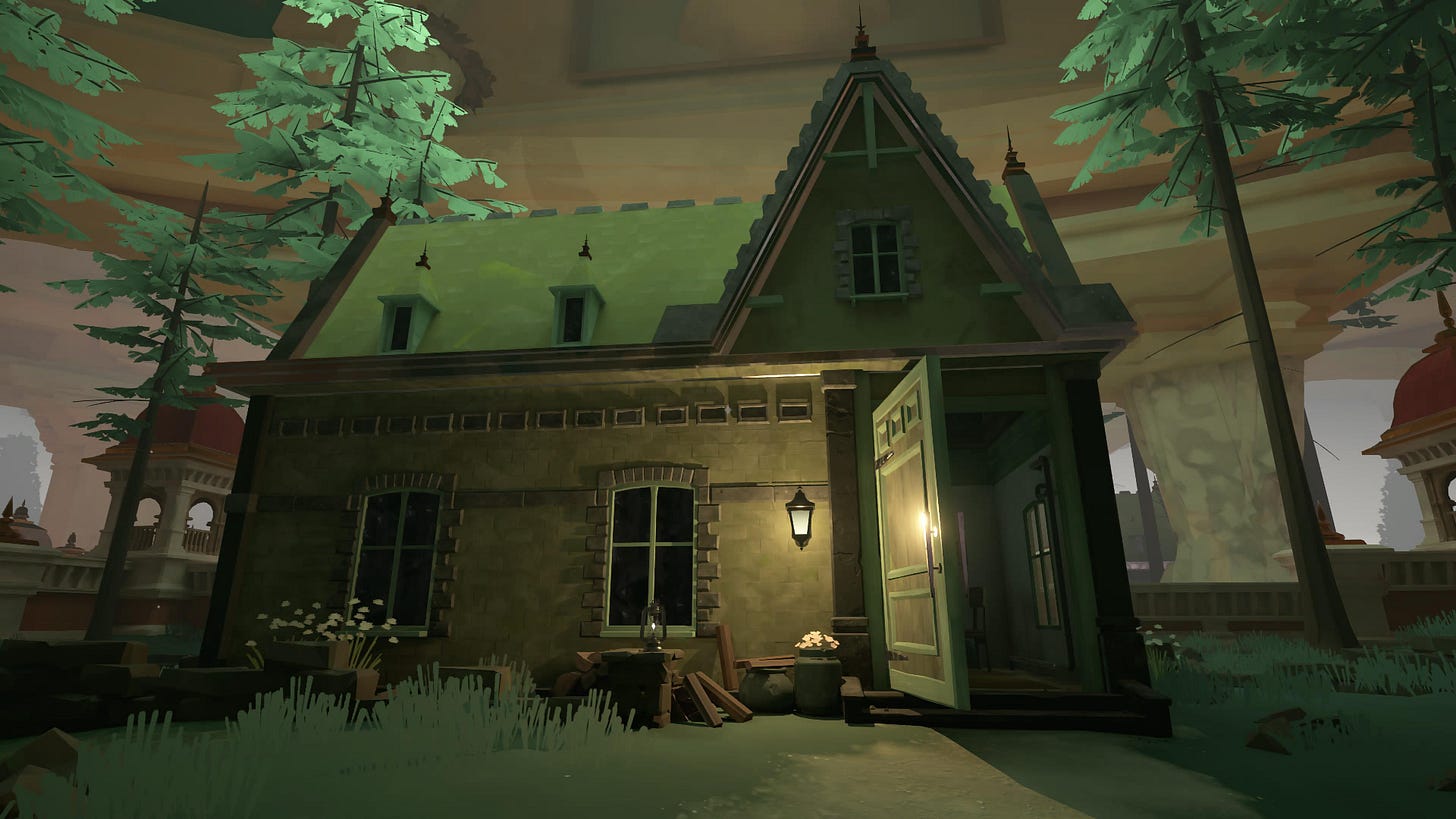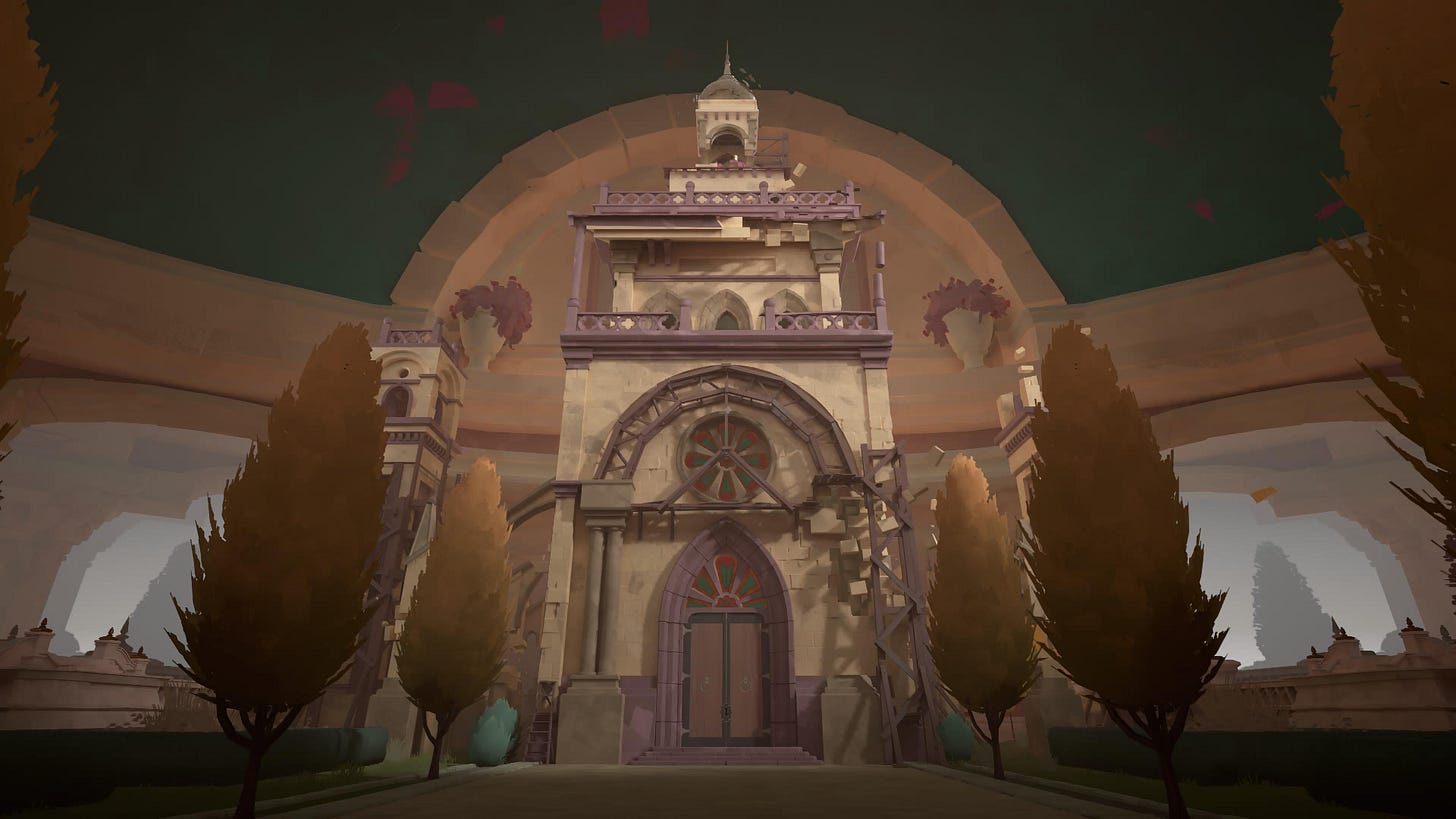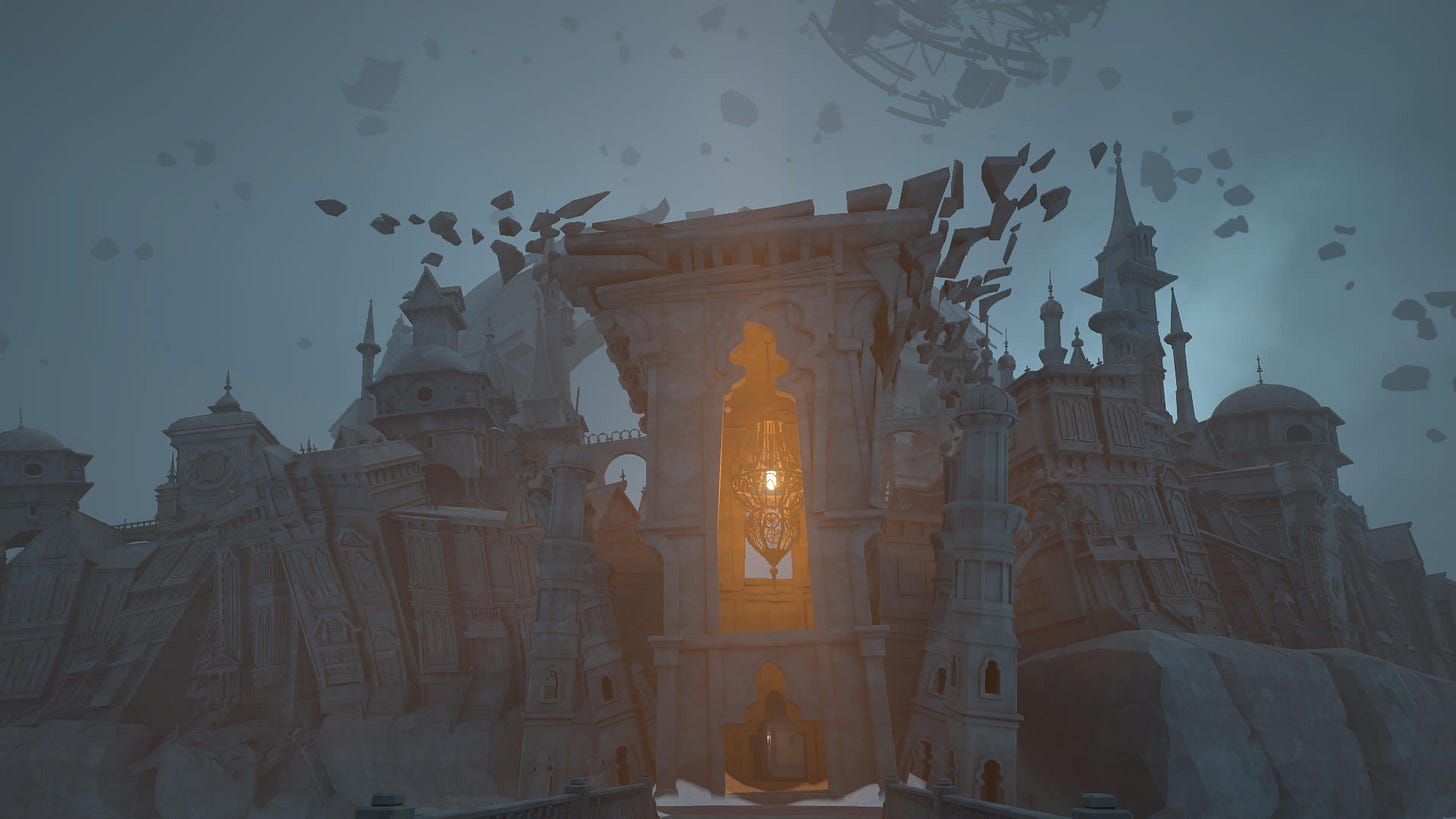Maquette's Aestheticism and Experimentation with Scale.
Maquette, a French word for “scale model” (I’m not sure a more perfect title for this game exists), is the latest in a string of puzzle games I have been playing during the pandemic. Published by Annapurna Interactive (this studio has an impressive hit rate with me), I had extremely high expectations for the experience I was about to have. In some ways, the game is surprising and innovative. In other ways it is disappointing. However, the architecture occupies a special place in the story and gameplay. I think Maquette deserves acknowledgement for its innovation and some of the risks it takes in its spatial design.
Maquette recalls a romantic relationship between Michael (the story is from his point of view) and Kenzie from its inception through the turbulence and to its conclusion. The story is… okay? Its a good story, but the story has been done several times and Maquette doesn’t really have anything new to share (I recommend watching 500 Days of Summer or Marriage Story and playing Florence for other impactful versions of this story). As puzzles are solved more of the story is unveiled most often through words that materialize on a wall in the direction of the next puzzle (I’m always reminded of the awful curios and knickknacks hung on people’s walls that say things like “Live. Laugh. Love”).
The touch stone is the model (Maquette?) at the center of the main dome.
The model in this beautiful Beaux-Art inspired dome, is a smaller version of everything under the dome causing an infinite loop of scale. Nearly every puzzle involves shifting scales by dropping items or traveling between each scale. The puzzles include a few Eureka moments, but overall they could utilize the beautiful architectural designs in more interesting ways (half the time you don’t even get to go into the buildings). There are issues with puzzles introducing new mechanisms doing poor job of expressing that you should be looking to use a new mechanism. This left me wandering around a pretty large area for what felt like an eternity, but was probably closer to 20 or 30 minutes. All I had to do was jump on a rock.
The exploration of different scales is the most successful part of the puzzle design. This speaks to me as an architect, since architects utilize different scales in all sorts of ways (Rem Koolhaus of OMA even named a compendium of his projects S, M, L, XL). For instance, on a single drawing a floor plan may have an enlarged plan to show more detail; that enlarged plan may have a blown up detail to include smaller elements; that blown up detail may have a section cut to show how the detail is constructed.
The architecture in this game is beautifully designed and integral to the story. Michael uses a sketchbook (which actually leads to the second definition of Maquette as a “quick initial sketch”) which he draws a number of ideas including buildings. Most of the buildings start off in either Art Nouveau or Victorian styles.
I love the detail put into each of these models. The bottom side of the home shown above is exposed (not that the construction exposed makes a whole lot of sense). This type of view fills out the view of the architecture moving forward.

I love this view so much because it actually reminds me of one of my favorite images from the Bauhaus produced by Alfred Arndt. I mention this drawing far too often and it is otherwise unrelated to this review.
Eventually the styles expand. My wife (always pointing out obvious stuff I miss while I’m obsessing over puzzles and cornices) pointed out that as their relationship developed and became more whimsical, Michael’s style started to incorporate Kenzie’s style. It turns into Aestheticism or Romanticism (Aestheticism is a mash-up of different revivalist styles from many different cultures including Middle Eastern, Asian, American, and European styles).
At the peak of the relationship, the home they share is covered in abstract art. It is cozy with it’s combination of midcentury and traditional furniture. The feeling fades once I realized that the rooms are gigantic (I think to widen the view) and include disturbingly wide stairs leading off of a living room (this is a small thing, but a staircase ending at a doorway going outside positioned off of a living room with no landing? It’s clear there is no code official in this fictional world).
As the relationship starts to devolve and some of the darker issues start to take hold, the architecture deteriorates. The dome breaks down, the whimsy disappears. The color palette becomes much more suppressed.
The Gothic church is falling apart. The last desperate bastion of their relationship is crumbling.
Michael falls into a deep depression. The sense of loss of a deep meaningful relationship (romantic or otherwise) washed over me. This portion of the game is the most successful in terms of story and experience. The pace quickens, buildings start to oppress the view. The lack of emotional control takes over as the Michael stumbles his way through the streets. The Victorian architecture is no longer beautiful as Michael once drew it. The steep roofs look haunting, the color is completely gone.
Eventually Michael comes upon the ruined dome surrounded by the remnants of his memories with Kenzie.
In here he realizes it’s time to try to put his life back together and move on. Slowly but surely the color comes back. Every puzzle solved is a good memory saved and lesson taken to heart. The Aestheticism is back as Aesthetic pagodas soar towards the dome, which is being reconstructed above (and below I guess because the model is back too).
Honestly, my feelings on Maquette are all over the place. The story was both boring and emotional (the story starts a bit slow, but the incredible voice over performances by Bryce Dallas Howard and her husband Seth Gabel helped me get invested). The architecture was both beautiful and absurd. The puzzles are both innovative and tedious. The game is definitely not bad? but is it good? I’ll just say it is a bravely unique game by a first time developer. It’s worth the short jaunt through this game just to see the architecture for yourself.

